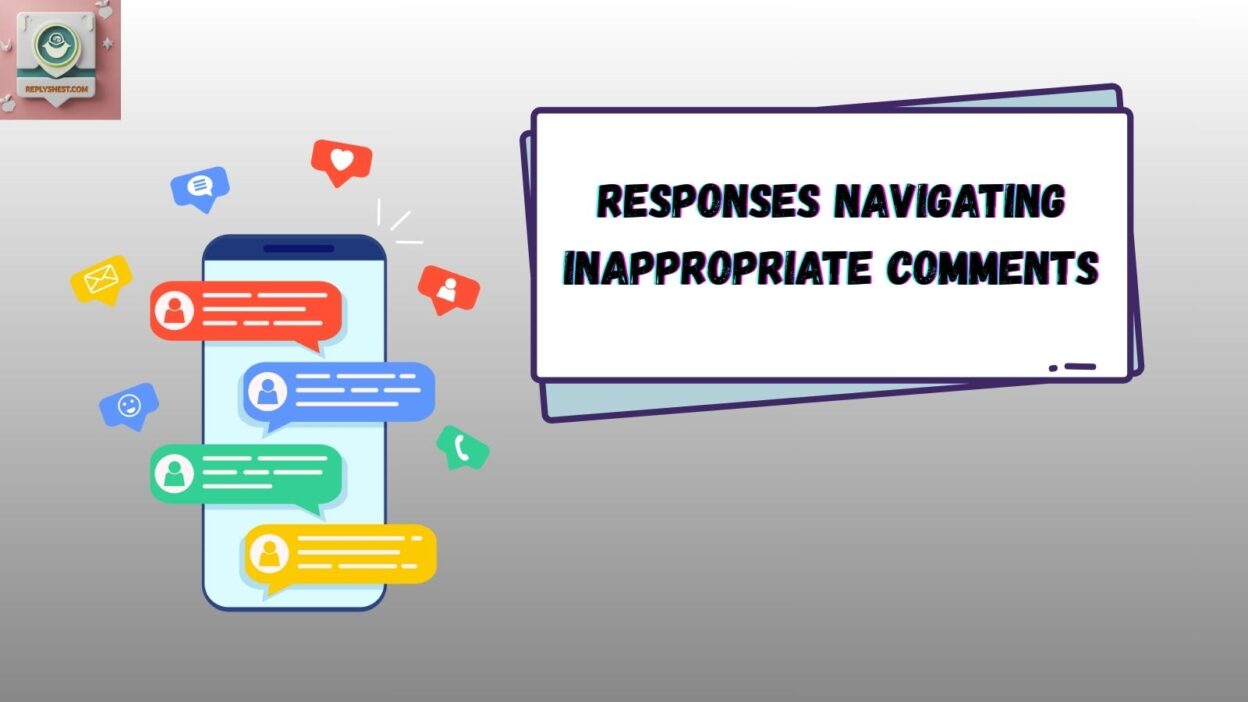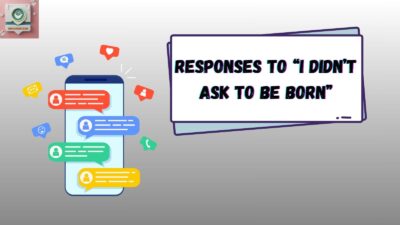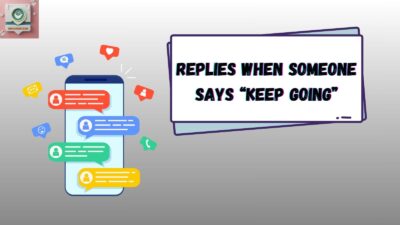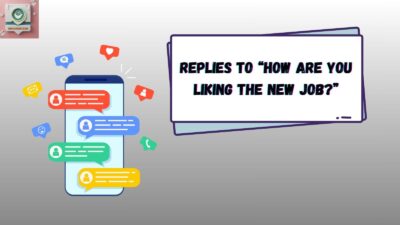We’ve all been there. You’re having a nice conversation when suddenly someone throws in a comment that feels inappropriate, rude, or simply out of place. In that moment, you might freeze, laugh nervously, or even stay silent because you don’t know what to say. The truth is, navigating inappropriate comments takes grace, empathy, and strength. Responses Navigating Inappropriate Comments.
When responding to inappropriate comments, I’ve found it helps to stay calm and composed while keeping my well-being at the center. Taking a deep breath before reacting prevents anger or frustration from making the situation worse. Using clear “I” statements to express how I feel—like “I feel uncomfortable when you say that”—helps the commenter understand without things starting to escalate. If the other person is intrusive or aggressive, I either redirect the conversation to a different topic or simply disengage and walk away. This is not about weakness but about prioritizing peace, setting boundaries, and protecting my confidence.
From my own experience in workplaces and even casual groups, being assertive yet respectful builds a professional and healthy environment. Sometimes a humorous or light deflection—as long as it stays PG and fits the tone—can defuse tension and shift the interaction. At other times, a firm and direct response is needed to show that a line has been crossed. I’ve also learned that clarifying questions like “Can you elaborate on what you mean?” often make someone rethink their words. Whether you choose to ignore, rephrase, or assertively call out the issue, the key is staying consistent, mindful, and strategic so your communication remains both appropriate and effective.
1. “That comment doesn’t sit right with me.”
Best use: When you want to politely but firmly signal discomfort.
Not to use: If you’re in a situation where calling it out might escalate conflict unnecessarily.
Other ways to say: “I’m not comfortable with that.” / “That feels off.”
Example: At work, if someone jokes about a stereotype, you can calmly say: “That comment doesn’t sit right with me.”
2. “Let’s keep this respectful.”
Best use: Group settings, meetings, or family dinners.
Not to use: If the setting is private and you’d prefer a softer tone.
Other ways to say: “Let’s stay kind.” / “Let’s keep this positive.”
Example: If a friend teases someone in a hurtful way, you can step in with: “Let’s keep this respectful.”
3. “I don’t find that funny.”
Best use: Shutting down inappropriate jokes.
Not to use: If the comment wasn’t meant as humor (use something more direct instead).
Other ways to say: “That joke doesn’t land for me.” / “That’s not funny to me.”
Example: Someone makes a sexist joke; you respond calmly: “I don’t find that funny.”
4. “That crosses a line.”
Best use: When someone goes too far with words or behavior.
Not to use: In very formal environments where diplomacy is required.
Other ways to say: “That’s inappropriate.” / “That’s over the line.”
Example: If a colleague comments on your personal appearance, you say: “That crosses a line.”
5. “Let’s change the subject.”
Best use: Redirecting conversations gracefully.
Not to use: When addressing harassment (it might minimize seriousness).
Other ways to say: “Let’s move on.” / “Can we talk about something else?”
Example: If a friend brings up gossip you dislike, you can simply say: “Let’s change the subject.”
6. “That’s not appropriate here.”
Best use: Professional settings or group discussions.
Not to use: With close friends where humor is understood.
Other ways to say: “That’s not suitable right now.” / “This isn’t the place for that.”
Example: In a meeting, if someone jokes crudely, you can say: “That’s not appropriate here.”
7. “I’d prefer we keep this professional.”
Best use: Workplace situations.
Not to use: Social gatherings with friends.
Other ways to say: “Let’s stay work-focused.” / “I’d like us to keep it professional.”
Example: If a coworker flirts inappropriately, you respond with: “I’d prefer we keep this professional.”
8. “That makes me uncomfortable.”
Best use: One-on-one conversations.
Not to use: When you need to be firmer in public situations.
Other ways to say: “I’m not okay with that.” / “That bothers me.”
Example: A relative makes an insensitive remark, you gently say: “That makes me uncomfortable.”
9. “I’d rather not discuss that.”
Best use: When someone digs into personal topics.
Not to use: If addressing disrespectful jokes or harassment.
Other ways to say: “I don’t want to go there.” / “Let’s skip that.”
Example: A coworker asks about your salary, you can politely reply: “I’d rather not discuss that.”
10. “I’m going to stop you right there.”
Best use: When you need to interrupt immediately.
Not to use: With people who may feel embarrassed by bluntness.
Other ways to say: “Hold on, that’s not okay.” / “Let’s pause there.”
Example: If a conversation heads into offensive territory, you say: “I’m going to stop you right there.”
11. “That’s not something I want to hear.”
Best use: Shutting down gossip or negativity.
Not to use: With people who might take offense too easily.
Other ways to say: “I’d rather not hear that.” / “That’s not for me.”
Example: If a friend shares a cruel rumor, you say: “That’s not something I want to hear.”
12. “Please respect my boundaries.”
Best use: Clear communication of limits.
Not to use: Casual jokes between close friends.
Other ways to say: “That’s crossing my boundaries.” / “Please respect my space.”
Example: Someone pries into your dating life, you respond: “Please respect my boundaries.”
13. “I don’t think that’s okay.”
Best use: General disapproval without sounding harsh.
Not to use: When you need stronger language.
Other ways to say: “That doesn’t feel right.” / “That’s not acceptable.”
Example: In a group chat, if someone posts something offensive, you write: “I don’t think that’s okay.”
14. “That’s not the kind of talk I appreciate.”
Best use: When someone uses crude language.
Not to use: If subtlety is required.
Other ways to say: “I don’t like that type of comment.” / “That’s not my style.”
Example: If a colleague curses rudely, you respond: “That’s not the kind of talk I appreciate.”
15. “Let’s stay kind.”
Best use: Gentle correction in groups.
Not to use: When the comment is severe or offensive.
Other ways to say: “Let’s keep it nice.” / “Let’s stay positive.”
Example: If a friend mocks another, you say: “Let’s stay kind.”
16. “I’d appreciate it if you didn’t say that.”
Best use: Firm but polite boundary.
Not to use: With strangers who may not respond well.
Other ways to say: “Please don’t say that.” / “I’d prefer you not to.”
Example: A coworker comments on your appearance, you reply: “I’d appreciate it if you didn’t say that.”
17. “That’s a bit much.”
Best use: Light tone for casual settings.
Not to use: When a stronger boundary is necessary.
Other ways to say: “That’s too far.” / “That’s over the top.”
Example: If a friend exaggerates with crude humor, you can laugh and say: “That’s a bit much.”
18. “We don’t need to go there.”
Best use: Redirecting without drama.
Not to use: If the comment was harmful and needs clear confrontation.
Other ways to say: “Let’s not dive into that.” / “That’s not necessary.”
Example: If someone brings up divisive politics, you say: “We don’t need to go there.”
19. “That’s not a respectful way to talk.”
Best use: When someone is belittling others.
Not to use: If you want a softer approach.
Other ways to say: “That’s disrespectful.” / “That’s not kind.”
Example: If a peer insults another, you say: “That’s not a respectful way to talk.”
20. “That’s inappropriate.”
Best use: Straightforward, professional tone.
Not to use: When the relationship requires softer communication.
Other ways to say: “That’s not suitable.” / “That’s uncalled for.”
Example: In a workplace, if someone makes an off-color remark, you say: “That’s inappropriate.”
21. “I don’t appreciate that.”
Best use: Expressing disapproval clearly.
Not to use: When you need to stay more neutral.
Other ways to say: “I don’t like that.” / “I don’t welcome that.”
Example: If a friend makes a rude joke, you respond: “I don’t appreciate that.”
22. “That feels disrespectful.”
Best use: Conveying how you personally experience it.
Not to use: When you want to avoid emotional framing.
Other ways to say: “That comes off as rude.” / “That’s not kind.”
Example: Someone talks down to you, you reply: “That feels disrespectful.”
23. “Let’s not make it personal.”
Best use: During debates or disagreements.
Not to use: In harassment cases where seriousness matters.
Other ways to say: “Keep it to the issue.” / “Don’t make it about me.”
Example: In a work meeting, if someone attacks you personally, you calmly say: “Let’s not make it personal.”
24. “That’s not something I’ll engage with.”
Best use: Online conversations or arguments.
Not to use: In face-to-face situations needing softer wording.
Other ways to say: “I won’t respond to that.” / “That’s not for me.”
Example: On social media, someone comments rudely, you reply: “That’s not something I’ll engage with.”
25. “I’m not okay with that.”
Best use: Simple, clear, effective boundary.
Not to use: When the relationship requires more diplomacy.
Other ways to say: “That doesn’t work for me.” / “I’m not fine with that.”
Example: If a friend makes a cruel joke, you can simply say: “I’m not okay with that.”
Conclusion
Navigating inappropriate comments is never easy, but with the right words, you can protect your boundaries while staying graceful and calm. The key is to balance firmness with kindness, ensuring your response sets limits without escalating tension.
Over time, you’ll find that standing up for yourself not only earns respect but also makes conversations healthier and more meaningful. Personally, I’ve learned that the most powerful responses are often the simplest—short, clear statements that say exactly what you mean.
10 Editor’s Picks (Why People Choose These)
- “That makes me uncomfortable.” – Simple and direct without sounding harsh.
- “Let’s change the subject.” – Perfect for deflecting gracefully.
- “Please respect my boundaries.” – Strong boundary-setting with dignity.
- “That’s not appropriate here.” – Ideal for professional situations.
- “I don’t find that funny.” – Stops inappropriate jokes instantly.
- “I’d prefer we keep this professional.” – Best for workplace interactions.
- “That crosses a line.” – Firm, clear, and effective.
- “I’d rather not discuss that.” – A polite way to dodge personal questions.
- “That’s inappropriate.” – Concise and professional.
- “I’m not okay with that.” – A strong, universal phrase that works everywhere.
These are chosen because they strike the perfect balance between firmness and respect, making them versatile across different settings.



